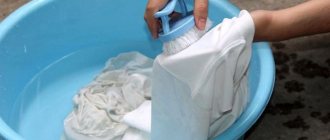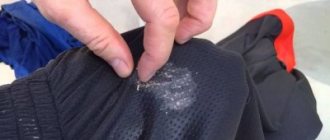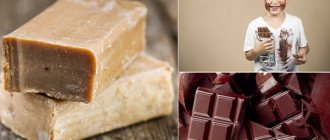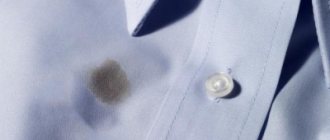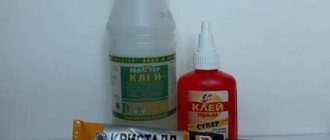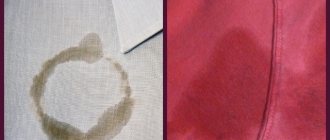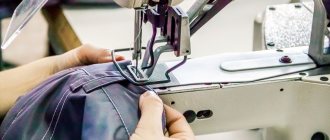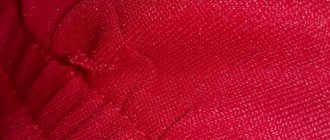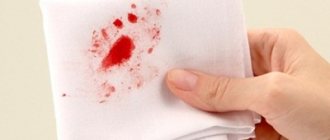Share on social media networks:
Women are prone to change, and sometimes we are tempted to change something. Why not experiment and make a new, even more attractive one out of an old thing? Many girls have a favorite coat hanging in their closet, the style of which is outdated, or it is simply too long. For example, by shortening the bottom and sleeves of your long-forgotten outerwear, you can make a stylish product that even the most advanced fashionistas will envy. You can even construct a jacket from a shortened coat, complementing it with various decorative trims. Shortening a coat with your own hands is as easy as shelling pears. And you don't need complicated tools to do this job.
How to shorten the sleeve of a knitwear item
Very often it is necessary to shorten the sleeves of a knitted blouse or sweater. This can be done in several ways. The choice depends on the features of the model (with cuffs or not) and on the density of the knitting.
Machine knitted item without cuffs
Usually, knitting sleeves on a machine starts with an elastic band or double stockinette stitch. In any case, this detail must be left unchanged, otherwise the item will lose its factory appearance.
The shortening work is carried out in several stages.
- Try on the sweater and use a basting stitch to mark the new length. In this case, it is necessary to take into account the length of the factory hem, since in the updated product it will remain in place. For example, if a sleeve needs to be reduced in length by 5 cm, and the hem is 2 cm, then the stitch line should be 7 cm from the edge of the product.
- Turn the edge of the part right side out and align the line marked with thread or chalk with the line where the elastic band transitions into the main fabric. Pin the inner seams and stitch them in a circle.
- Now all that remains is to stitch along the marked line. To do this, you need to prepare the sewing machine: replace the needle with a “knitted” one, select the “knitted stitch” function (indicated as three rows of short strokes), and disconnect the removable platform.
- The part is stitched 1–2 mm below the factory hem. Excess fabric is trimmed, leaving 0.5–1 cm, and the edges are processed using an overlocker or manually.
The sleeves of the machine-knitted product are turned right side out and steamed through damp gauze.
Thick jersey sweater with cuffs
In order to shorten sleeves with cuffs, you need to do the following work:
- Put on the jacket and use pins or chalk to mark the desired length.
- Measure the width of the cuffs and raise the marked line up by this amount. After all, in the updated product the cuffs will be sewn in place.
- Tear off the cuffs and trim off the excess material, moving down 1–1.5 cm from the line.
- The sleeve is narrower at the bottom than along the cut line, so the inner seam needs to be adjusted a little.
- The cuffs are sewn into place, the allowances are processed with a zigzag.
We recommend: How to glue rhinestone patterns onto fabric or nails and what glue is best to use?
As in the previous version, all seams must be ironed through a damp cloth, and if desired, you can stitch them with a knitted stitch along the front side of the cuff.
Hand knitted sweater
To shorten the sleeves of a knitted blouse, you need to do the following:
- Mark the new length. Select the row of loops that runs along the cutting line.
- Cut the loop near the side seam and carefully pull the thread out in a circle. As a result, the canvas will split into two parts.
- The open loops of the short sleeve are picked up on a knitting needle and then closed or tied with an elastic band.
There are many ways to shorten the sleeves of clothing without spoiling the appearance of the product. If you have no experience in sewing, you can practice on old things that you don’t mind ruining. You need to start with simple models without lining, cuffs and other parts that complicate the work.
How to shorten and sew a coat lining
After the bottom of the coat is folded and hemmed, you need to align the lining of the coat. Put the coat back on with a new hem and carefully straighten the lining on the shoulders, back and front. It is important that it hangs down without clinging to the fabric of clothing inside the coat.
Again, with an assistant, mark the hemline, but now on the lining. From this line on the lining, 2 cm is first reduced, and then 5 cm is added. As a result, it turns out that the lining needs to be made longer than the hem of the coat by exactly 3 cm. But on the condition that the finished lining will be 2 cm shorter than the bottom of the coat. See also the article How to hem the bottom of a product with a hidden seam.
If the lining is sewn to the hem, then it is cut taking into account the placement of the fold, such as shown in this photo. It is impossible to sew a lining without a fold on the shoulders, as shown in the top photo, since it will definitely “pull” the hem or back. Firstly, it can simply cling to clothing, pulling up the edge of the coat. Secondly, some lining fabrics can “shrink” after waterlogging (rain, snow). That is why experienced tailors, before sewing a coat, perform a wet-heat treatment of the lining fabric, and in some cases, wet the lining and then dry it.
How to hem the bottom of a coat
When hemming an item of heavy fabric, such as a coat, it is necessary to distribute the weight of the item evenly and to do this, make several rows of securing stitches so that the fabric does not wrinkle. A particularly high hem (4-5cm) or a hem made from heavy drape fabrics can be made using two or three rows of hand-tacking stitches, for example, herringbone, as shown in this photo. This method of hemming a coat, using several rows of stitches, will not pull back the edge of the finished product, and will evenly strengthen it along the edge.
In our example, we are considering a coat with a loose lining, that is, the hem will be attached separately, and the lining is not connected to the bottom of the coat, so the cut edge of the fabric needs to be serged or otherwise sealed.
The cut edge of a hem made from heavy drape fabrics can be finished with an edge band or an overlock stitch on an overlocker. If you don’t have an overlocker, you can use a zigzag stitch on a sewing machine. Such processing when shortening a coat is necessarily necessary for loose fabrics, since the edge of thick, heavy fabrics cannot be processed with a double hem, since jeans are hemmed. A double hem will make the seam rough and can ruin the appearance of the coat and even “print” on the front side over time.
It is very important, before hemming the coat, to glue the hem area with adhesive material. It is not necessary to glue the part that is folded, but the front side must be glued to the width of the hem. This will strengthen the fabric and prevent the bottom of the coat from appearing as a “wave”.
Press the hem line lightly. Pin the hem by pinning it halfway between the hem line and the cut edge of the fabric. Fold the edge over the pins and sew the hem from the inside using a herringbone stitch. Then re-pin the pins higher and repeat this operation.
The folded and hemmed edges of the coat must be ironed along the wrong side, being careful not to press down the iron too much. To steam the hem more strongly, you can iron it with a damp iron. It is not advisable to iron the coat from the front side, since the edge of the hem may be imprinted. See How to iron clothes properly.
How to shorten a coat at home?
The services of an atelier will cost you more than shortening a coat yourself. Every girl will be able to trim, tuck and hem the bottom of the product. There's nothing complicated about it. The most important thing here is to correctly mark the line along which the excess fabric will be cut.
Stages of work:
- First of all, we decide on the length of our converted clothes.
- We pin tailor's pins to the desired length along the bottom of the product.
- Now we measure the cutting line of the material with a centimeter.
- Remove the pins. Lay out the coat on the table surface.
- We mark with chalk along the bottom of the clothing the size that we will remove.
- We draw a straight line along the previously marked points, and then put 4 cm down from it. We have created an allowance for hemming and hemming of our product.
- We secure the ends of the existing seams with a stitch so that they do not tear in the future.
- We duplicate the hem with adhesive tape, since we cut off the previously glued area, and now we need to restore the structure of the coat.
- We overlay the bottom edge of the coat, thereby protecting the cuts from fraying the fabric. If you do not have an overlock machine, then finish the cut with a zigzag stitch.
- Sew the bottom edge, focusing on the previously marked chalk mark.
- Now we sew the bottom of the lining fabric. The top line will be the hem line, the second line will be measured from the first line down by 4 cm, and the third line by 2 cm. We sew the top line with thread.
- We hem the corners along the bottom of the left and right sides. Now let's baste the lining.
- We begin ironing, after which we sew down the lining fabric along the bottom with matching threads.
- We sew the bottom of the coat with hidden stitches using the same 70-thick threads.
Important! The hem does not need to be hemmed by hand, but rather glued, for example, with adhesive web.
- Remove all previously basted threads.
- We carefully steam the shortened hem so as not to leave traces of basting.
- We put on the finished product and fasten the threads. We check that the length of the sides along the bottom edge matches.
That's all the work! New clothes are ready to go out!
How to mark the hem line of a coat
Wear your coat with the clothes you will wear in winter or fall and have someone mark the shortening line with chalk. This is done like this: you should stand in front of the mirror without straining in the position in which you usually wear outerwear, and the other person should make the first chalk mark on the front of the coat. Gradually, you should turn to one side, and your assistant with a long ruler or triangle should remain in place and chalk marks on the front part.
The ruler should touch the floor, and the marks should be placed at the same distance from the floor. A continuous line is drawn along the marked marks, a hem allowance of 4-5 cm is added and the excess part of the coat fabric is cut off.
The hem of any coat is usually uneven (H) as the back stretches over time. This is facilitated by moisture (rain, snow), and since the drape coat is heavy, the back gradually stretches out much more than the side seams. In people with a stooped figure, on the contrary, the shelf stretches out. Therefore, you cannot rely on the factory cut of the coat and mark a new line from the old hem. In a long coat this discrepancy may not be noticeable, but in a shortened version it will immediately catch the eye. The new hem line can only be accurately determined using a ruler, taking measurements from the floor, as mentioned above.

